The mission of the Center for Photonic Science and Engineering is to promote a transfer of the innovative research and development in area of photonics into real sector of economics. The areas of nowadays R&D topics are stipulated by demands and strategies of our industrial partner, domestic and international. The administrative structure of the Center is designed to be able to react promptly on new social challenges and emerging scientific fundamental achievements. Center for Photonic Science and Engineering strategy is in building of full-scale chains from fundamental research to applications and hence distribute own activity between fundamental and applied research with reasonable partition.
In respond to the main national wide initiative, Center focuses on the R&D mostly in areas related to optical communication and signal processing: fiber optic communication systems, free space communication, optical distributed sensor systems, optical simulators and optical computers, atomic clock systems, key distributed systems etc. We see our niche in the creation of an ecosystem for design and production of Photonic Integrated Circuits that are of great demand for any photonic applications.
In addition to that, Center hosts cutting edge activities in area of bio-photonics, producing and applications of carbon nanotubes and other new materials, and developing algorithms for future computing.
 |
Professor Albert Nasibulin specializes in the aerosol synthesis of nanomaterials (nanoparticles, carbon nanotubes and tetrapods), investigation of their growth mechanism and their applications. At the moment his main recent research topic is devoted to transparent, flexible, stretchable and conductive single-walled CNT films and their applications. Solar sells on heterojunctions CNT/silica
Artificial nose on the basis of CNT matrix
Stretchable electronic components based on nanomaterials
Ultrasound generation using free-standing carbon nanotube films
Synthesis of single wall nanotubes with controlled chirality
Doping of the single wall nanotubes for improvement of transparent electronic devices
|
 |
Assistant professor Yuriy Gladush is working in the field of optical properties of nanomaterials and its applications in fiber and integrated optics. His research background includes theory of nonlinear waves, excitation dynamics and optoelectronic response of semiconductors. In present time his research is focused on the application of the carbon nanotubes for the ultra-fast lasers and nonlinear wavelength conversion. Ultrafast fiber laser at 920 nm Fiber lasers, emitting in the region between 1 and 2 μm, have proven to be excellent ultrafast laser source making use of soliton mode locking. At shorter wavelength the niche is dominated by titanium sapphire lasers with its huge gain bandwidth and excellent beam profile and pulse quality. Many applications are relying on Ti:Sa laser, however, its high cost, bulkiness and strict alignment requirements are limiting application of this laser out of laboratory conditions. In our group we are developing all-fiber ultra-fast laser working in the spectral domain of Ti:Sa, which will be alignment-free, much cheaper, more robust. This development will help promoting transfer of ultrafast laser technology into real life applications. 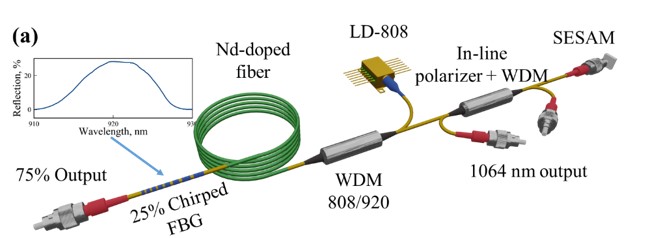 Highlighted publication: Highlighted publication:[1] “Nd-Doped Polarization Maintaining All-Fiber Laser With Dissipative Soliton Resonance Mode-Locking at 905 nm“, A. A. Mkrtchyan et al., J. Lightwave Technol. 39, 5582-5588 (2021) Nanomaterials with tunable nonlinear response
It is known that nanomaterials, including carbon nanotubes and graphene, demonstrate high nonlinear optical response. The relative simplicity of its integration on any surface opens opportunities for enhancement of the nonlinear response of various types of passive waveguides. One example is application of carbon nanotubes on a fiber tip or a polished side as a saturable absorber for passive mode locking of ultrafast lasers. The enhancement of a four wave mixing signal in integrated photonic waveguides, covered with graphene or carbon nanotubes, was also demonstrated. Moreover, high surface to volume ratio of these materials makes them very sensitive to local environment, opening opportunities for control of its nonlinear response. We have demonstrated control over saturable absorption of carbon nanotubes by electrochemical gating, and, by this, controlling the pulsing regime of the fiber laser. In this project we investigate the possibilities of control of nonlinear optical response in carbon nanomaterials by various methods including electrochemical gating and local fields enhancement on photonic crystals. 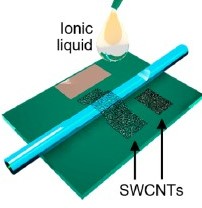 Highlighted publications: [1] “Direct measurement of carbon nanotube temperature between fiber ferrules as a universal tool for saturable absorber stability investigation”, D. Galiakhmetova et al. , Carbon, 184, 941-948, (2021) [2] “Ionic liquid gated carbon nanotube saturable absorber for pulse generation regime switching”, Yu. Gladush et al., Nano Letters, 199, 5836-5843, (2019) |
 |
Prof. Dmitry Gorin concentrates on the application of a combination of material science approaches, acoustic and photonic tools in biomedicine. He is a coauthor of pioneer works related to optoacoustic probe based on hollow core microstructured waveguide, ultrasound sensitive layer by layer capsules, multimodal contrast agents, photonic based gas- and liquid sensors etc. New types of multimodal contrast and theranostic agents, optics-based sensors, optoacoustic probes have been already elaborated. Elaboration of optoacoustic probe for intravascular/endoscopic application for identification of atherosclerosis plug type 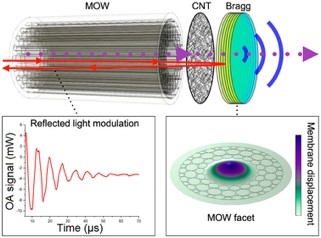 Highlighted publication: Highlighted publication:“Optoacoustic Effect in a Hybrid Multilayered Membrane Deposited on a Hollow-Core Microstructured Optical Waveguide”, A. N. Kaydanov et al., ACS Photonics 8(11), 3346–3356 (2021) Gas/Liquid Sensors for diagnostics Gas/Liquid Sensors for diagnostics of a pathology state and transient processes from normal state to pathology as well as evaluation of medical treatment efficiency based on combination of Photonic Integrated Circuit (PIC) and microfluidics or a hollow core microstructured waveguides (in collaboration with G.Golzman’s Group and industrial, academic and clinical partners) 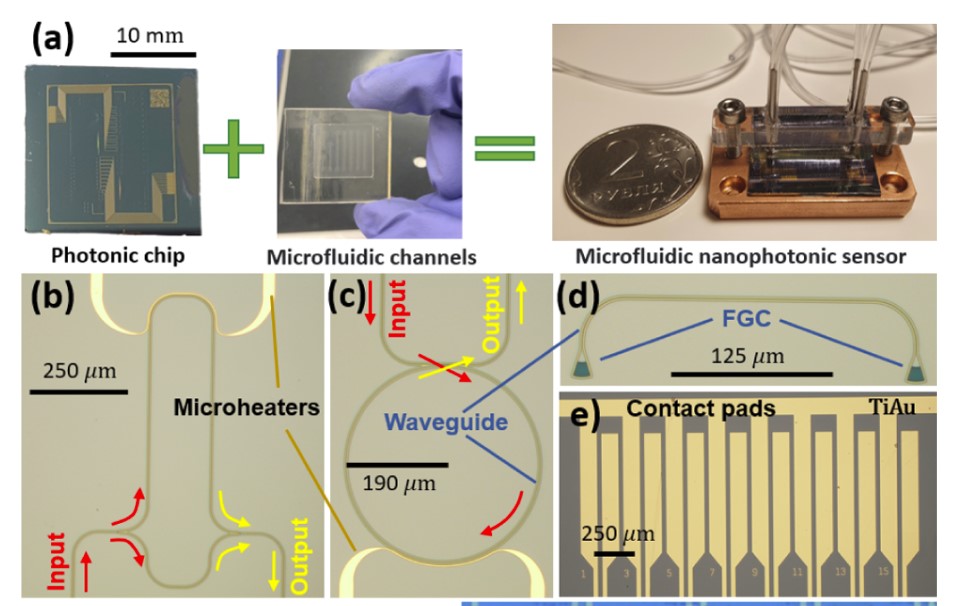 Highlighted publication: Highlighted publication:“Hybrid nanophotonic–microfluidic sensor for highly sensitive liquid and gas analyses”, A. Kuzin et al. Optics Letters 47(9), 2358-2361 (2022) Optical methods for monitoring the growth of the diatom algae and their activity in the carbon dioxide capturing 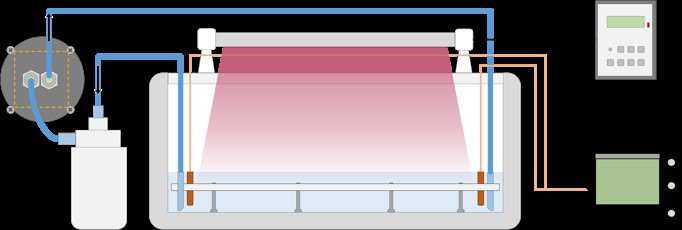 Highlighted publication: Highlighted publication:“Photoacoustic and fluorescence lifetime imaging of diatoms”, J. Cvjetinovic et al. Photoacoustics 18, 100171 (2020) |